Youyoung good medical voice | Unlock colorectal cancer treatment decisions with young doctors!Cases of colorectal cancer in the late northeast, northeast and northwest are coming
Author:Cancer Channel of the Medical Time:2022.09.21
*For medical professionals for reading reference

"You Young Good Medical Sound" Wonderful cases of northeast and north station sharing are coming!
On September 3, 2022, the "Excellent Young Good Medical Voice | Global Management Case Speech in Given Cermiars Cancer", jointly organized by the China Clinical Oncology Society (CSCO) colorectal cancer special committee and Huang Medicine. The opening of the grand opening. This meeting invited a number of well -known domestic experts and young doctors to share clinical practice experience through the form of accurate diagnosis and treatment of late colorectal cancer, through the form of case sharing. Transfer and explore academic knowledge, and improve the level of diagnosis and treatment of advanced colorectal cancer!
At the beginning of the meeting, Professor Zhang Yanqiao, the Cancer Hospital of Harbin Medical University, and Professor Zhao Da, Professor Zhao Da from Lanzhou University First Hospital, delivered a speech. They said that the world is yours and us, but in the final analysis, it is yours. Young good medical sound is a very novel event. It gives young doctors to show their opportunities and platforms, enabling young doctors Chance. The young doctors who attended the meeting today are hope of the medical industry and the backbone of the tumor industry. I hope that doctors can fully show their style in this meeting, and wish the conference a complete success.
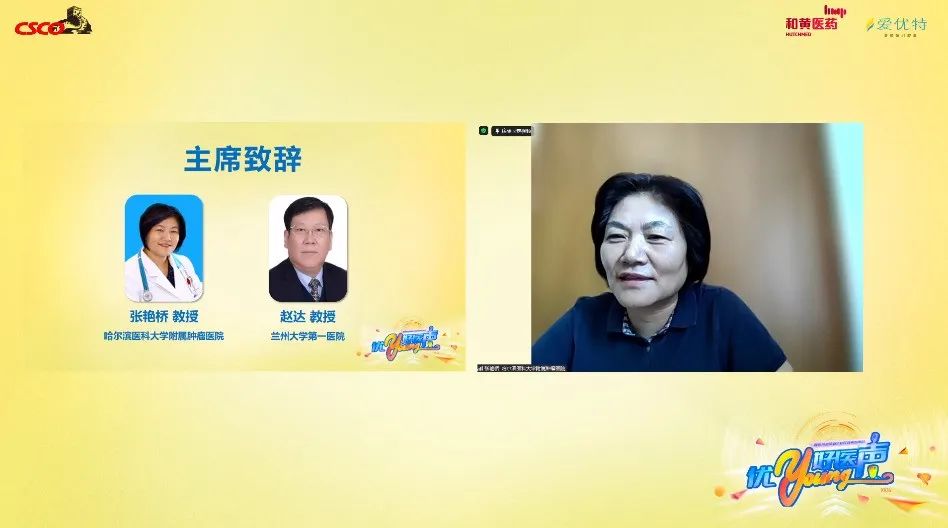
Figure 1 Professor Zhang Yanqiao of Harbin Medical University Affiliated Oncology Hospital delivered a speech
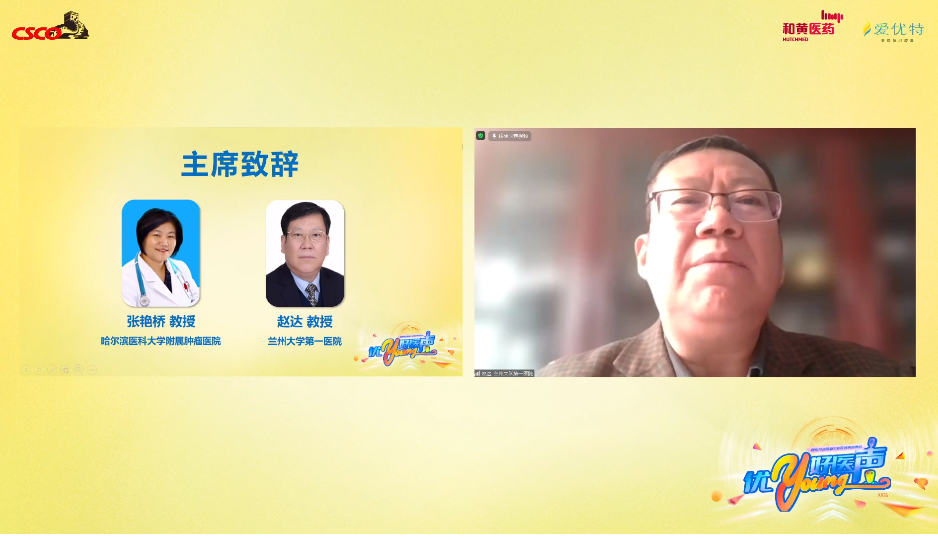
Figure 2 Professor Zhao Da from Lanzhou University First Hospital delivered a speech
Seven teams exhibit style -wonderful diagnosis and treatment case sharing
Subsequently, the meeting entered the sharing session of the case. This link was by Professor Li Hongling of Gansu Provincial People's Hospital, Professor Li Zhiwei, Affiliated to Harbin Medical University, Professor Qu Xiujuan of the First Affiliated Hospital of China Medical University, Professor Wang Chang of the First Hospital of Jilin University, Xinjiang Medical University Professor Zhang Hua, the First Affiliated Hospital, and Professor Wu Tao, the Second Hospital of Dalian Medical University, chaired the meeting. Professor Lou Baisong, Qiqihar First Hospital, Professor Li Guixiang, Lanzhou University Second Hospital, Professor Zhao Junhui, Affiliated to Qinghai University, Professor Park Ying, General Hospital of the Northern Theater, Professor Lu Yi, Jilin Provincial Oncology Hospital, Professor Qu Yanli of Xinjiang Cancer Hospital, Anshan Professor Manli Municipal Cancer Hospital formed a jury.
Case 1: A target free of charge, guarding all the way
This case is provided by the General Hospital of Ningxia Medical University
Instructor: Professor Chen Ping; Speech: Dr. Liu Quanxia
Summary of the disease:
The patient was a 66 -year -old woman who complained about "left half of colon cancer in January, and chemotherapy was intended to be chemotherapy" on July 8, 2020. Check CEA23.5ng/ml, CA199 is normal. After admission, the diagnosis of PT4AN0CM1 (right lung) after the diagnosis of adenocarcinoma in the left half, and the gene state is KRAS/NRAS/Braf wild type, MSI-H. The first -line treatment was used to use Folfiri+Sibcoxipoplasty. The patient had severe gastrointestinal reactions. After 4 cycles, the efficacy assessment was evaluated as disease stability (SD). Considering that the patient is MSI-H, the second-line treatment is treated with Tripley single anti-single drug treatment. After 6 cycles, the effect is limited. Third -line treatment uses Tripley Mippling+Cyntinib (5mg) scheme. After 2 months, the effect of review is obvious. It has been 16 months for continuing medication. During the treatment period, the dosage of the dose of the 呋喹 呋喹 dose is fine -tuned. (3mg or 4mg oral), but the curative effect is still stable, and the current total survival (OS) has reached 26 months. The diagnosis and treatment process of this item prompts that for MSI-H patients, the combined immunotherapy of pupinib is a feasible treatment plan, and the safety can tolerate it, which can bring continuous benefits to patients.
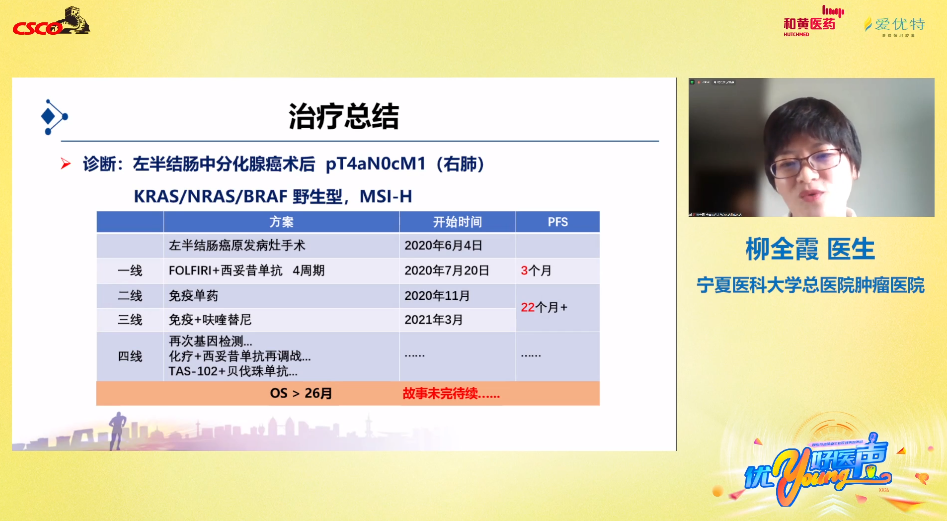
Figure 3 Dr. Liu Quanxia sharing cases for cases
Case 2: Standardize diagnosis and treatment to help last
This case is provided by the First Affiliated Hospital of Xinjiang Medical University
Instructor: Professor Wang Wenran; Speech: Dr. Wu Ge
Summary of the disease:
The patient is a 64 -year -old man who preliminary diagnosis is a rectal malignant tumor (CT3N0M0). In May 2014, the new assisted chemotherapy for chemotherapy was performed in July. Medium -differentiated adenocarcinoma (PT3N1M1), for half a year after surgery, Osarina Platinum+Capitabin therapy, regularly reviewed SD. In August 2015, the disease progressed and liver metastases occurred. The intrahepatic metastases and systemic system treatment was performed. In August 2016, the review and evaluation of the "new disease lesions" were reviewed, and the liver metastases were regularly evaluated as SD after the treatment of liver metastases. By September 2010, the disease progressed, "hepatic arterial microspheres of therapy", the chemotherapy plan was Yilitangkang+Leitanus, but patients could not withstand adverse reactions. In December 2020, it was adjusted to oral ribinib (5mg), retraining every three months, and no progressive survival (PFS) reached 12 months. The four -line therapy uses Siten Midumi combined chemotherapy and reduces chemotherapy doses. Patients can tolerate it. At present, patients have survived for more than 7 years. The case prompts that the full management of the whole process is of great significance to the survival of the patient.
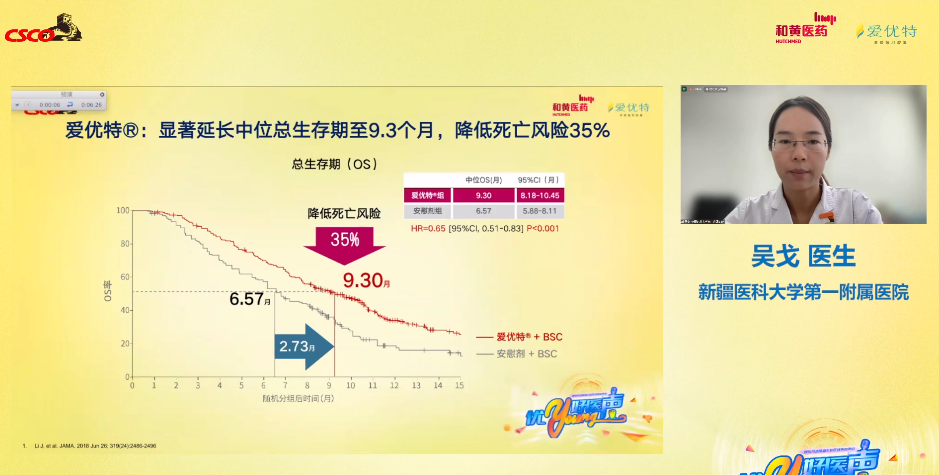
Figure 4 Dr. Wu Ge for case sharing
Case 3: Peak circuit turns, see the clouds see the day
The case is provided by the First Hospital of Jilin University
Instructor: Professor Wang Yizhuo; Speech: Dr. Liu Shuhan
Summary of the disease:
The patient is a 66 -year -old woman. He complained that he had an intermittent or intermittent blood for 4 months. He was diagnosed in our hospital on July 3, 2020. Tumor logo: CEA 22.43 ng/ml, CA199 49.13 U/ML, and the final diagnosis is the period of differential adenocarcinoma (CT4BN1BM0) in colon. In July 2020, colon cancer root treatment was performed. One month after surgery (10), the first -line treatment was the XELOX scheme. Since October 2020, the chemotherapy scheme was replaced with the Folfox solution. In January 2021, the disease progressed. The second -line therapy uses Folfiri to combine Bevarzumab, and the disease progresses again in just 1.8 months. During the three -line treatment, NGS prompts immunotherapy positive factor: KRAS mutations, TP53 mutations, peripheral blood TMB 9.76/mB, use the stericiab+chiminib scheme (5mg intermittent treatment), the first 10 cycle reaches part of the part Remove (PR), new lesions occur during the 14th cycle of treatment. The four-line therapy uses TAS-102 combined with Bervarzumab, and the disease progresses after 2.3 months. Subsequent treatment is recommended to use Envolimab to combine with Rejutii. Patients expressed their consideration, but died of sudden twitches one week later. The patient has a frequent liver metastasis in a short period of time after colon cancer. The standards of first and second -tier treatment are progressing rapidly, and tumor biological behaviors are poor. The choice of third -line therapy combines the clinical characteristics of patients, past treatment reactions, and NGS test results for patients to choose anti -vascular combination immunity for patients to choose antibrokers joint immunity for patients. Treatment has reached the longest PFS in each line. Figure 5 Dr. Liu Shuhan sharing cases for cases
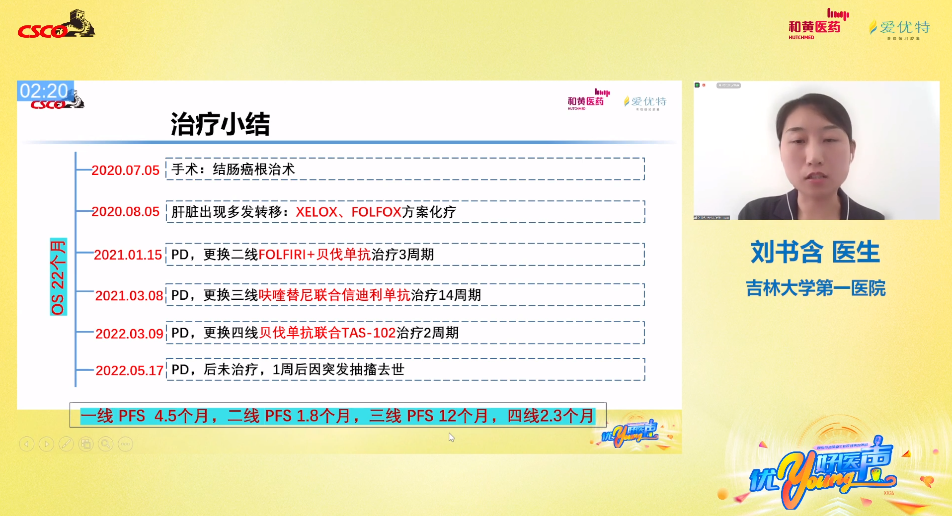
Case 4: The specification emphasizes accuracy, and precision must meet the specifications
This case is provided by Harbin Medical University Affiliated Cancer Hospital
Instructor: Professor Li Yanjing; Speech: Dr. Zhou Qingxin
Summary of the disease:
The patient is a 52 -year -old woman and was first admitted to the hospital for the first time in April 2020. The diagnosis of post -lymphadenoplasma metastasel tumor after the right half -colon cancer (PT3N2BM1 IV) peritoneal lymph nodes, Kras, NRAS wild -type braf V600E/E2/D mutations. The first -line treatment of Bevarzumab+XELOXIRI solution is one cycle. After one cycle, due to allergies of Elito, the Bedvarzumab combined with the XELOX scheme, the disease progress of patients in August 2020. In September 2020, the patient was treated with a single medicine for crichinib (5mg), with back pain, and the patient's disease progressed again 1 month later. Three-line treatment chooses (binib (4mg) combined with PD-1 inhibitors. After 2 cycles, the lesions are reduced to achieve PR. After the treatment of 5 cycles, the patient maintains the PR state. At present, PFS has been treated with PFS for more than 18 months, and OS has reached 31 months. This case suggests that standardized treatment and precise treatment are the foundation for patients with advanced intestinal cancer.
Figure 6 Dr. Qingxin for case sharing
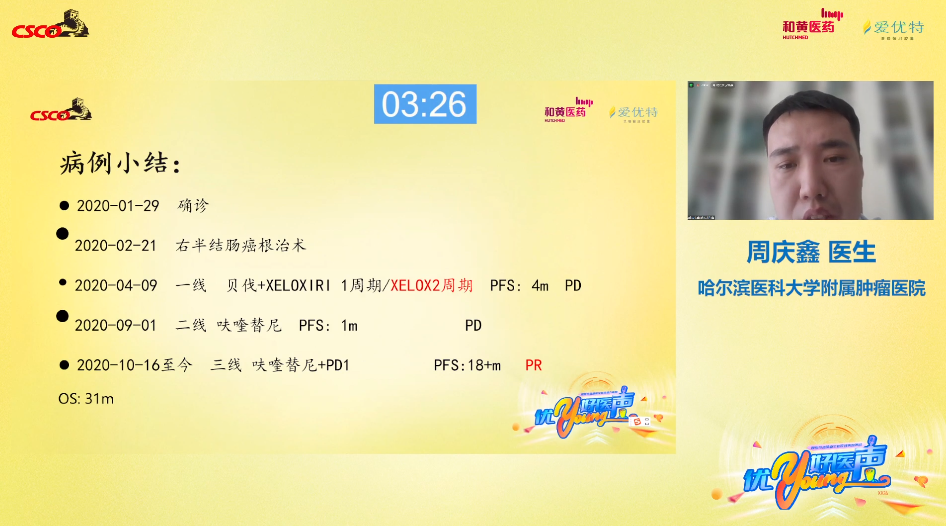
Case 5: "Intestine" road is long, I hope more
This case is provided by the Second Affiliated Hospital of Dalian Medical University
Instructor: Professor Wu Tao; Speech: Dr. Qu Yanjun
Summary of the disease:
The patient is a 64 -year -old man. He first visited in January 2018. The postoperative diagnosis was a stage of PT3N1AM1A IV after the liver metastasis of hepatic metastasis. Patients performed MFOLFOX6+Sicien Mippling scheme in November 2018. After 4 cycles, the efficacy evaluation was PR. In May 2019, Koribbin Single Pharmaceutical was maintained for the treatment, and a total of 14 cycles were completed. Later due to hand and foot syndrome stopped medicine. In April 2021, patients with new lesions occurred in the liver of patients, and the disease progressed. The use of chemotherapy combined with Siciex monoclonal treatment for 3 cycles, and the disease progressed again. In July 2021, the liver metastasis was divine, and the postoperative pathological liver tissue adenocarcinoma was combined in conjunction with the synthesis of intestinal adenocarcinoma. In September 2021, the patient performed 2 cycles of Ili Daolikang+Leiti Tessel+Bevarzab the treatment. After 2 cycles, the efficacy was evaluated as a reduced SD. Due to adverse chemotherapy reactions, patients were unable to resist the adverse chemotherapy reaction, and in October 2021, the left lung occupying radio frequency discharge was under CT guidance. After the progress, the third -tier use of the Xindi -Mipido combined small molecules TKI 呋喹 呋喹 呋喹 呋喹 呋喹 呋喹 呋喹 呋喹 呋喹 呋喹 呋喹 呋喹 呋喹 呋喹 呋喹 呋喹 呋喹 呋喹 进 进 进 进 进 进 进 进 进 SD after 3 and 6 cycles. At present, the third -line PFS has exceeded 7 months, and the patient OS has reached 46 months. This case highlights the importance of individualized treatment to the survival of patients.
Figure 7 Dr. Qu Yanjun made case reports
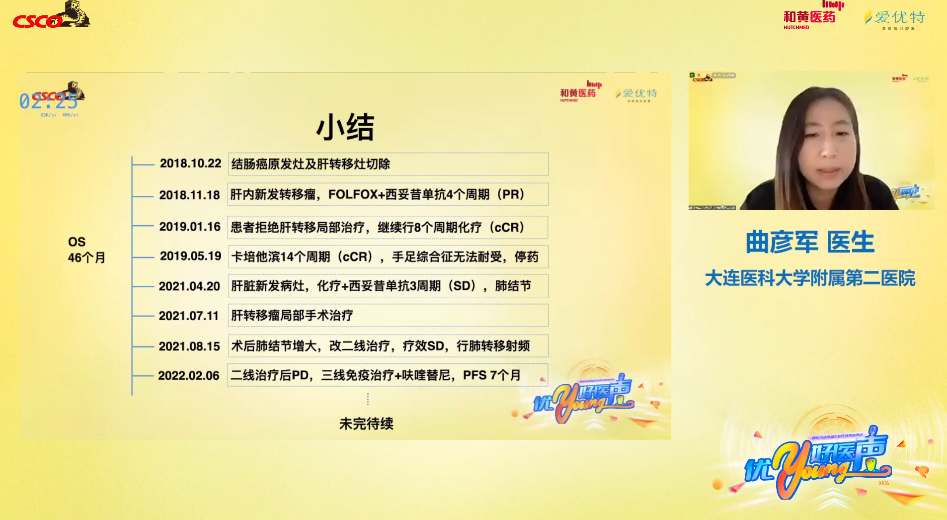
Case 6: Picking up the cocoon and sandwich
This case is provided by the First Affiliated Hospital of China Medical University
Instructor: Professor Qu Jinglei; Speech: Dr. Shi Ruichuan
Summary of the disease:
The patient is a 53-year-old man. He complained that the diagnosis of sigmal colon cancer accompanied the liver and post-peritoneal lymph node metastasis for 3 years and 7 months. Currently diagnose the IV stage of IV cancer, the genetic characteristics are C-ERBB-2 (3+), RAS, Braf wild type. In February 2019, the first -line XELOX solution was treated for 2 cycles, and the efficacy evaluation was SD. Later patients participated in the real -world Telkuzumab combined with the XELOX solution to treat the observation research of HER2 -positive MCRC. Therefore, patients have jointly applied Tushuzab from the third cycle and reached PR after 4 cycles. In June 2019, laparoscopy under the abdominal lenses, the root treatment of the sigmoid cancer+small intestine prevention fistula. After surgery, the XELOX+Tushuzumab plan was treated until August 2020's disease progressed. The second -tier treatment uses Tushuzhu Mippling+Puffyzumab+Ilidekang scheme for 8 cycles, and sequentially "proper dual targets". It is best to achieve a reduced SD. In June 2021, the disease progressed, and the third -tier treatment of patients were admitted to the DP303 (ADC drug) stage I study. After 2 cycles, patients were arranged due to adverse events. The four -line treatment is treated with Rigofitini, which has increased SD in 2 cycles and 4 cycles of liver progress. Patients with five-line therapy use Tushuzumab+PD-1 inhibitor solution. The 2 and 6-cycle ping effects are SD. A single lesion control is not good during 8 cycles. Therefore The Tushu Mupage was replaced with ADC drugs. At present, the patient's disease is stable, and the overall survival time has reached 43 months. This case prompts that for HER2 amplified colorectal cancer patients, the treatment of pyeib+immune+anti -HER2 treatment is a scheme worth exploring. Figure 8 Dr. Shi Ruichuan made case reports
Case 7: Layers to crack continuous benefits
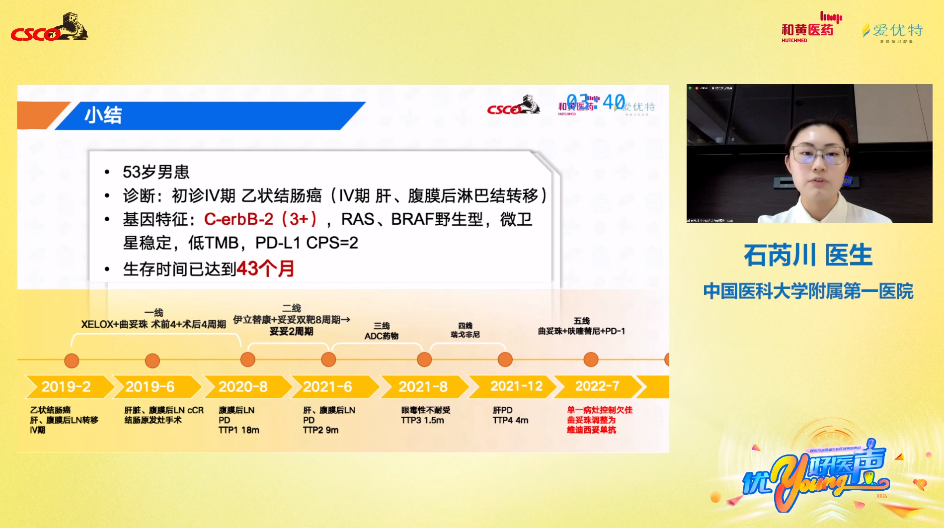
This case is provided by Lanzhou University First Hospital
Instructor: Professor Hou Xiaoming; Speech: Dr. Li Chunmei
Summary of the disease:
The patient is a 51 -year -old woman. In August 2019, the "intermittent stool habit changed for more than two years". The genetic testing was RAS wild type, Braf wild type, PMMR, and HER2 negative. Patients diagnose rectal cancer (medium differentiated adenocarcinoma, CT3N2M1A, IVA stage). From September 2019 to February 2020, the 4-cycle XELOX scheme was treated and radiotherapy was performed at the same time. After the new assistant treatment, in March 2020, "Rectal Cancer Cancer Treatment+Liver metastatic cancer resection" was performed. The 4 -cycle "XELOX" scheme was auxiliary chemotherapy after surgery, until six months later. In March 2021, the Sicie Settlement Mipide combined with Folfiri treatment, and the disease progressed 10 months later. Third -line therapy uses a chimininib (5mg) combined with Treepley Midarity. The patient's disease control is stable, and the PFS has exceeded 8 months. The case prompts that the three -line anti -tumor anti -tumor treatment of anti -tumor is objective, safety tolerance is objective, and it can bring continuous benefits to patients.
Figure 9 Dr. Li Chunmei for case sharing
Through wonderful cases, the seven doctors fully show their personal style and the thinking and choice of diagnosis and treatment teams in the treatment of the above real world cases. Finally, after the review and judgment of the jury, Dr. Liu Shuhan from the First Hospital of Jilin University performed well and won excellent cases.
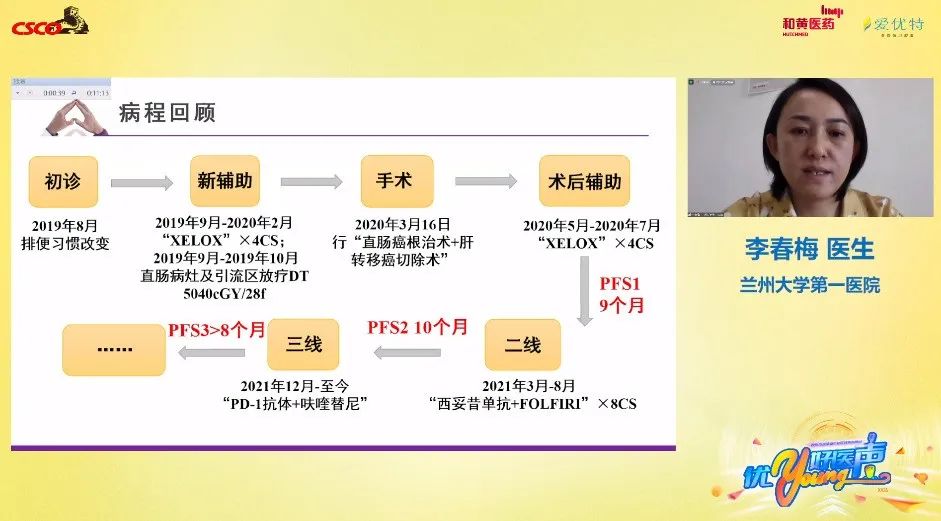
Summarize
At the end of the meeting, Professor Zhao Da, the chairman of the conference, made a wonderful summary. He said that the sharing of the seven doctors' cases was very exciting, which not only clearly described the diagnosis and treatment process of the case, but also showed the regulatory of the treatment of case treatment. At the same time, through the wonderful reviews and discussions, and Q & A sections of the mentor, young doctors can know their defects and make corrections. The form of this conference is novel. It is a stage for young doctors to grow and broaden their horizons. I hope that it can continue to advance.
*This article is only used to provide scientific information to medical people, and does not represent the viewpoint of this platform


- END -
Changji Prefecture formed a 150 -person epidemiological survey team to shorten the "chasing the sun" time
Tianshan News (Reporter Su Luping reported) On August 12, the Press Office of the People's Government of the Autonomous Region held a press conference on the prevention and control of new crown pneumo...
Don't scratch mosquito bites first!But itching and swelling like this
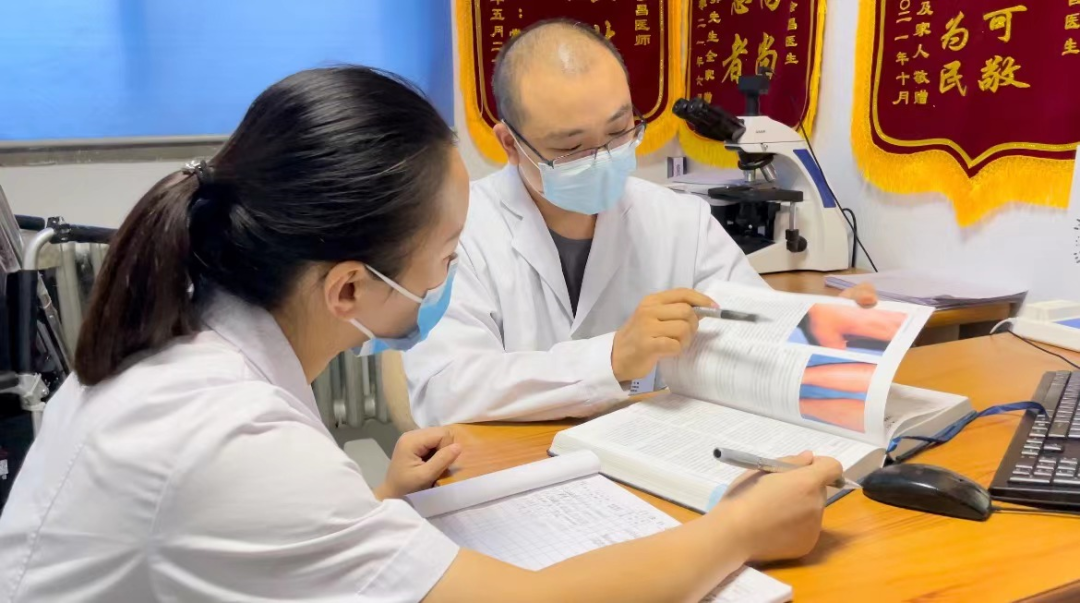
Top News · Henan Chamber of Commerce Luoyang Bao Guan Caiqing Correspondent You Y...